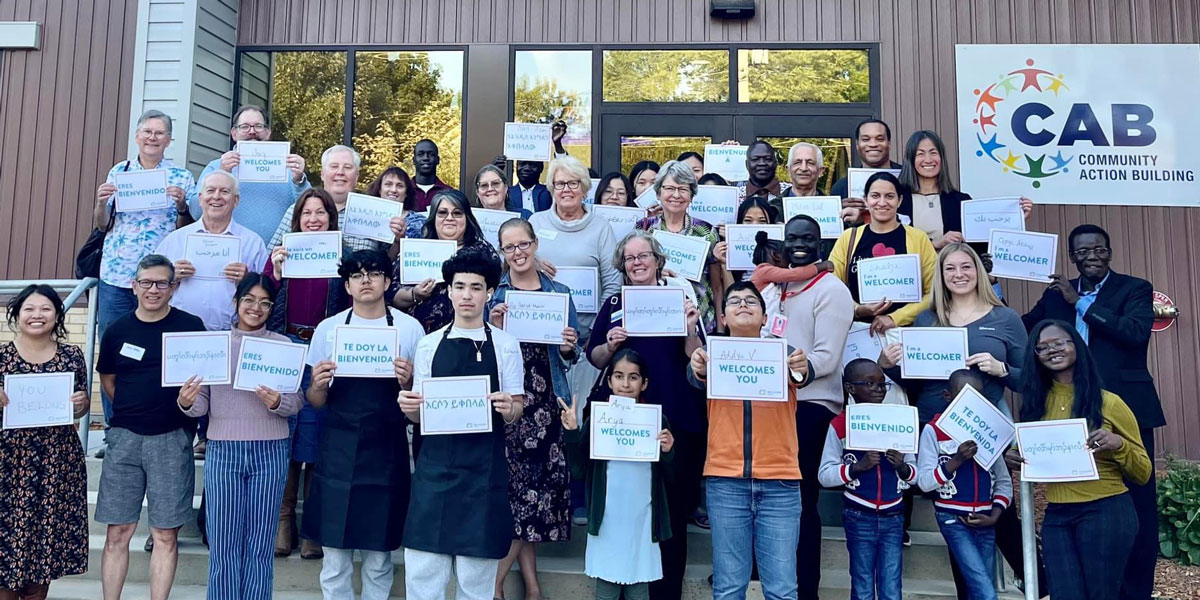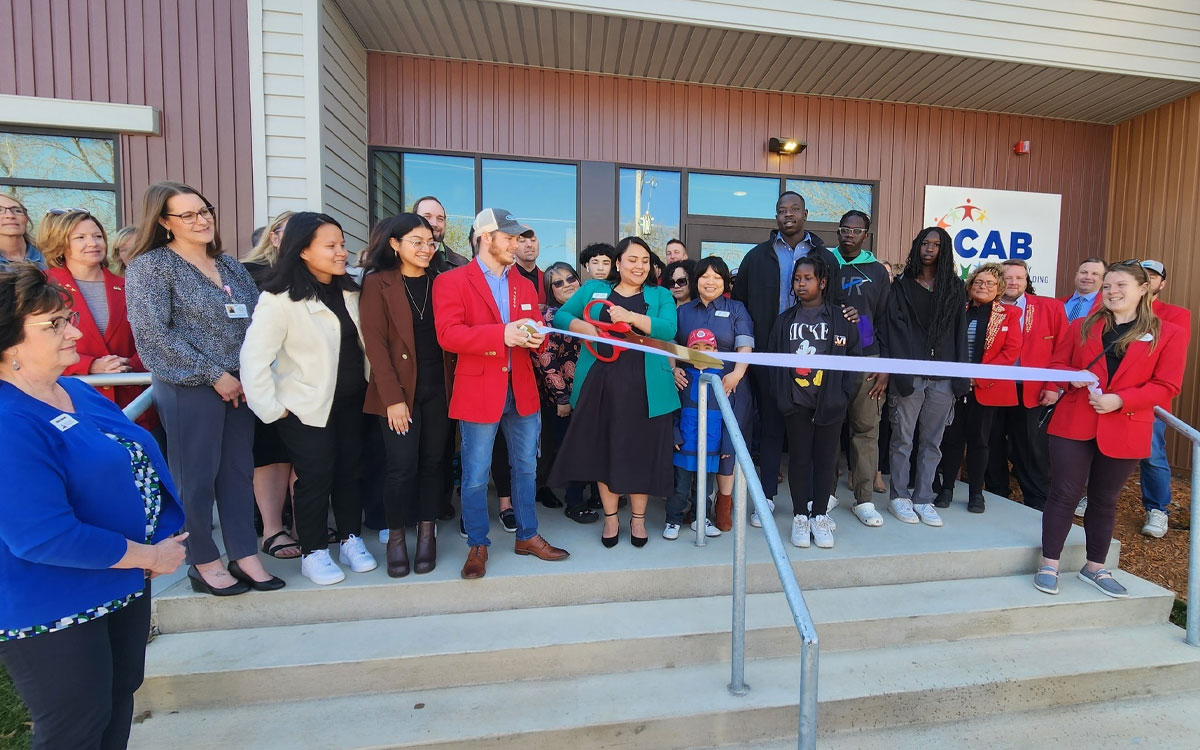By Ethan Watters
In her office in the Welcome Center in Austin Minnesota, Varinh Van Vugt has a collection of thank-you notes pinned to her wall. One stands out: a handwritten message from an elderly East African refugee. The three short sentences in imperfect English speak volumes about struggle and gratitude. “I am very foolish alone,” it reads. “But you glorious. You are faithful and true.” Varinh keeps that note and others to remind herself about the essence of her work as program coordinator. Her job is to build bridges between cultures and help newcomers find their footing.
Varinh understands the challenges immigrants face. Her story begins with her family’s journey from a forced labor camp in Laos to a refugee camp in Thailand and finally to the United States in 1987. The journey would leave an indelible mark on the family: one of Varinh’s brothers, just a toddler, died suddenly in the labor camp in Laos — a loss that still haunts the family decades later. When Varinh was not yet two, her family resettled in Austin, Minnesota, a small town where they found a foothold. Varinh’s father, initially struggling to find work, eventually found a job at Hormel Foods after earning an industrial maintenance certificate at a local college.
I didn’t go by my real name until I was in sixth grade, People called me Linda because it was easier. It wasn’t until a friend told me that my name, Varinh, was beautiful that I started using it.
The family’s early years in Austin were marked by both welcome and rejection. “Go Home” was painted on their driveway, along with racial slurs. But there were also bright spots: The First United Methodist Church took them in, offering Sunday school and community meals, never pressuring them to convert from their Buddhist faith. Church members volunteered to teach her mother to drive — creating bonds that would last decades.
It wasn’t easy. Her father struggled to overcome the trauma he’d experienced. Her parents eventually divorced and Varinh spent years in and out of foster care. She still remembers her first taste of oatmeal in a foster home, when food became, as it often does for immigrants, a marker of both difference and adaptation. Slowly, she managed to integrate her culture of origin with her new identity.

A photo of Varinh as a child with her family at Napho Refugee Camp in Thailand, where they fled after the labor camp.
Guiding Newcomers with Compassion
Varinh’s personal experience informs her approach. “My family didn’t have a Welcome Center,” she reflects. “We had to figure things out ourselves, and it was often the kindness of individuals who helped us along the way. Now I get to be that person for others.”
The Welcome Center serves an increasingly diverse community. Beyond the Southeast Asian refugees of the 1980s who first made Austin home, the city now welcomes immigrants from Latin America, West Africa and Myanmar. Varinh and her staff also work with growing communities of Togolese and Beninese. The center coordinates with local organizations and agencies to ensure that immigrants and other community members have access to resources and support. They strive to create a balance between preserving cultural identity and integrating into the new culture. They also advocate for more welcoming and inclusive practices and work to raise awareness about the challenges faced by immigrants in the community.
“Sometimes it’s something as simple as explaining a letter someone received,” Varinh says, describing the day-to-day work she and her team do. “Other times, it’s helping someone with an employment application or connecting them with services that are hard to access if you don’t know where to look.”
The challenges keep evolving. Recently, the Welcome Center has seen an influx of immigrants arriving under the “Alternative to Detention” program, which allows people awaiting their immigration court dates to live with family members instead of in detention centers.
“They’re here, but they aren’t eligible for work authorization or social services, and that puts a huge strain on the families or friends who take them in,” Varinh explains. “It’s frustrating because there’s not much we can do beyond helping them understand the situation and connecting them with any available resources.”
Culturally Relevant Food Assistance
The Welcome Center is a founding member of the Hometown Food Security Project, a coalition working to end hunger in Mower County. Through Varinh’s leadership, the Welcome Center is working to provide culturally relevant food assistance to those in need.

Austin extends a warm welcome to all immigrants at the Community Action Building (CAB).
For Varinh, this work is personal. Growing up, her family often relied on food programs that didn’t always meet their needs. “We got free breakfast at school, but it didn’t sit well with me, and I often couldn’t eat it,” she remembers. “Navigating hunger was hard. Some days, if you didn’t have your lunch ticket, you got a peanut butter sandwich, and that was something I couldn’t eat.”
Today, she advocates for food programs that offer culturally relevant options. “Canned vegetables can be tough for some of the families we serve,” she explains. “They come from places where fresh produce is part of daily life, and they aren’t used to cooking with canned food. We work to provide more fresh produce because that’s what makes sense for them. It’s not just about giving people food, it’s about making sure that the food we provide is useful to them and that they feel comfortable and confident using it.”
One Family’s Journey Through the System
Among the many hats Varinh wears, she helps families through life-altering transitions. She recalls one refugee family from Myanmar who sought help renewing their green card. “We couldn’t directly handle the immigration work, so we referred them to legal services. But all the agencies were overloaded and couldn’t take the case,” she explains.
After persistent outreach, Varinh was finally able to secure assistance from a legal service. “It was a relief,” she says, but the family’s challenges didn’t stop there. The mother was experiencing a complicated pregnancy, and the family lacked essential items for the newborn, including a car seat and adequate bedding.

Ribbon cutting ceremony for the new Community Action Building (CAB), now home to the Parenting Resource Center, Welcome Center, and other community organizations.
“We went to work quickly,” Varinh says. “We reached out to local organizations, gathered donations, and delivered everything they needed to make the home comfortable for when the mother and baby came home from the hospital.” Varinh’s efforts went beyond paperwork, offering the family the kind of support that helped them stabilize their situation.
Months later, the father returned to the Welcome Center with good news: not only had his green card renewal come through, but he had also been hired for a full-time position at a local company. “He was working through a temp agency, but now the company offered him a permanent position,” Varinh says. “It was great to see that progress.”
An Ongoing Effort to Bridge Gaps
Varinh’s work is part of a larger effort to help Austin’s growing immigrant population integrate into the community. The challenges are varied — language barriers, legal hurdles, cultural misunderstandings — but she approaches each with a clear focus on solutions.
Varinh is quick to acknowledge that much of the progress made by immigrants in Austin is thanks to the efforts of many community members and organizations. “We collaborate with so many groups, from public health to local churches to other nonprofits,” she says. “It’s really a community-wide effort.”
In addition to her work at the Welcome Center, Varinh also makes sure to involve her own family in volunteer activities, instilling in her children the value of service. “We ring bells for the Salvation Army during the holidays, and we help with food distributions when we can,” she says. “It’s important to me that they understand the importance of giving back.” It’s a role she knows well, having walked the same path herself, and it’s one she’s dedicated to continuing as long as there’s a need.

Hometown Food Security Project
318 Main St N.
Austin, MN 55912
Get Involved!
If you’d like to volunteer with these efforts, let us know on this form.

